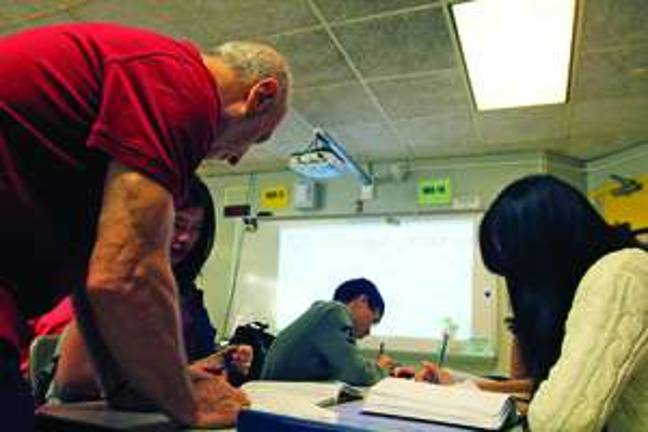Small Step from High School to College

Outstanding High School By Susan Armitage A rigorous, honors-level academic program and opportunities to take college courses at its partner, Baruch College, set this school apart. But Baruch College Campus High School (BCCH), located in Manhattan's District 2, is about more than just book learning. Through community service and a four-year advisory program, the school strives to foster social responsibility and support its students emotionally as well as intellectually. "Students feel very connected to the school," said Principal Alicia Perez-Katz. "It's a safe place where kids can learn and there's a depth in discussion." "It's like a hidden jewel," said PTA President Sybao Cheng-Wilson. But with good word-of-mouth reviews and 100 percent graduation and college enrollment rates, the school hasn't been able to keep its success a secret. A screened school, BCCHS saw a 63 percent increase in applications between 2010 and 2011. In the 2012 admissions cycle, for the second year in a row it was the city's most sought-after public high school, with 6,465 students vying for 111 freshman seats. The school's total enrollment is 441. Despite the highly competitive admissions process, Perez-Katz said BCCHS takes students with a wide range of abilities, including non-native speakers of English. Approximately 60 percent of currently enrolled students are Asian and 13 percent are Hispanic. Almost 55 percent of students in the 2011-2012 academic year were eligible for free or reduced-price lunch. Writing and literacy are strong focuses across the curriculum. The school identifies students with potential and elevates their performance to "not just passing, but doing very well at the honors level," Cheng-Wilson said. The College Board Advocacy and Policy Center included BCCHS in its 2012 catalog of effective practices to expand education options for students from low-income backgrounds. Freshmen are placed in an advisory class that stays together for all four years of high school and meets four times a week. To foster bonding, freshmen also attend an overnight retreat. The advisory program, which has been studied by the Bill & Melinda Gates Foundation and New Visions for Public Schools, provides a structured environment where students set academic goals, complete service learning activities and hone skills like time management. BCCHS received a 2012 Service in Schools "Excellence in Service" Award for its community service programming. The school's math department has also garnered national recognition. BCCHS's Elisabeth Jaffe was one of two New York state teachers to receive the 2011 Presidential Award for Excellence in Mathematics and Science Teaching. BCCHS was also named an Intel Schools of Distinction finalist in 2012 for excellence and innovation in math education. "Teachers have a lot of room for creativity in their planning," Perez-Katz said. One example is the math department's annual student conference, organized by the math teachers and modeled after a professional conference. Students investigate the mathematical aspects of everything from sports to the electronic game Angry Birds and teach their peers what they've learned. Despite its small size and numerous accolades, BCCHS still suffers from a common problem in city schools: crowded classrooms. The average class size at BCCHS in 2011-2012 was 32.3, according to city data. But dedicated, caring faculty who "eat, sleep and breathe teaching" keep students motivated to work hard, Cheng-Wilson said. "They're available to the kids. You can email them during the evening; they will email you back."